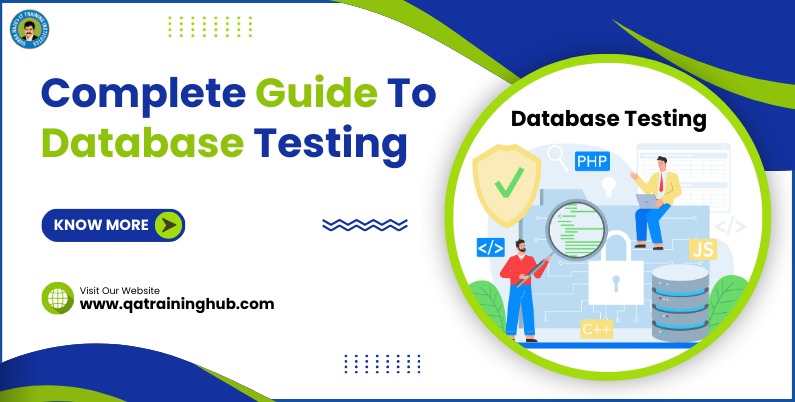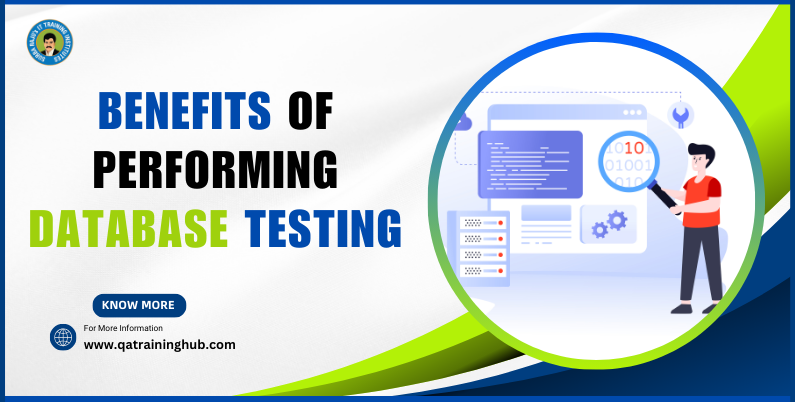
The Complete Guide to Database Testing: Ensuring Data Integrity and Performance
Database testing is essential for ensuring that databases work as they should, accurately storing and retrieving data efficiently. Effective testing of databases, whether for small projects or large-scale systems, is crucial to ensure data integrity and improve performance.In this complete guide to database testing , we’ll cover why testing is crucial, various testing methods and best practices to make the process smoother.
Understanding Database Testing
Database testing is a important aspect of the software testing process that focuses specifically on verifying the quality, dependability, and performance of databases. It includes a series of tests and procedures designed to identify defects, inconsistencies, and weaknesses within the database, ensuring that it operates as expected under various conditions.
Why is Database Testing Important?
Data Integrity: Making sure that the data stored in the database is accurate, consistent, and dependable is crucial. Database testing helps identify and rectify any inconsistencies or mistakes in storing, retrieving, and handling data.
Performance Optimization: As databases become larger and complexity, performance bottlenecks can arise, resulting in slow response times and decreased system performance. By conducting thorough testing, performance issues can be identified and addressed, ensuring optimal database performance.
Security Compliance: Data breaches and security vulnerabilities represent major risks to organizations. Database testing assists in identifying security weaknesses,unauthorized access points, and other vulnerabilities, allowing organizations to strengthen their data security measures.
Regulatory Compliance: Many industries are subject to strict regulations regarding data privacy and security, such as GDPR, HIPAA, and PCI-DSS. Database testing verifies that databases meet these regulations, reducing the risk of non-compliance penalties and legal consequences.
Types of Database Testing
Database testing involves a variety of testing techniques and methodologies, each with its own role in ensuring the quality and dependability of the database. Some common types of
database testing include : Schema Testing: Verifying the structure of the database schema, including tables, columns, relationships, and constraints, to ensure it meets the requirements and specifications.
Data Integrity Testing: Examining the accuracy, consistency, and completeness of data stored in the database, including data validation, referential integrity, and data migration testing.
Performance Testing: Assessing the responsiveness, scalability, and throughout of the database under various load scenarios, including concurrent user access, data volume, and transaction rates.
Security Testing: Identifying and resolving security vulnerabilities, such as SQL injection, privilege escalation, and data encryption, to protect sensitive data from unauthorized access and malicious attacks.
Concurrency Testing: Evaluating the database’s ability to handle multiple simultaneous transactions and ensuring data consistency and isolation levels are maintained under concurrent access situations.
Backup and Recovery Testing: Testing the backup and recovery systems to confirm that data can be successfully backed up, restored, and recovered in case of system failures or data corruption.
Compatibility Testing: Ensuring the database is compatible with various operating systems, platforms, and database management systems (DBMS), and maintains consistent performance across different environments.
Best Practices for Database Testing
For effective and thorough database testing, it’s essential to follow best practices and established methodologies. Here are some best practices for database testing:
Establish Clear Requirements: Establish clear and comprehensive requirements for the database, covering aspects like data structure, business regulations, performance standards, and security protocols, to guide the testing process.
Use Test Data Generators: Create practical test data sets to simulate real-world scenarios and edge cases, ensuring thorough test coverage and accuracy during testing.
Automate Testing Processes: Automate repetitive and time-consuming testing tasks, such as data validation, regression testing, and performance evaluation, to improve efficiency and consistency in testing.
Isolate Test Environments: Establish separate testing environments that closely resemble the production environment, allowing for safe and controlled testing without affecting live data or systems.
Implement Version Control: Use version control systems to manage database schema changes, scripts, and configurations, ensuring consistency and traceability across various versions of the database.
Collaborate Across Teams: Encourage collaboration among development, testing, and operations teams to ensure that goals, requirements, and priorities are aligned throughout the database testing process.
Monitor and Analyze Results: Continuously monitor and analyze test outcomes, performance metrics, and quality indicators to identify trends, patterns, and areas for improvement in the database.
Conclusion
In conclusion, at QA Training Hub, we understand the importance of database testing in ensuring the quality, dependability, and security of software applications. By following the complete guide to database testing provided above, testers and developers can effectively handle the complexities of database testing, identify potential issues, and implement strategies to resolve them. Our extensive training programs equip individuals and teams with the knowledge, skills, and best practices needed to excel in this crucial field.
Our commitment to providing industry-leading training and resources empowers professionals to become experts in database testing, providing them with the skills and knowledge required to succed in today’s competitive environment. Whether it’s schema validation, performance improvement, security compliance, or data integrity testing, our complete guide to database testing training covers every aspect of database testing, allowing participants to become proficient testers.
As organizations increasingly depend on databases as the foundation of their applications and systems, the need for proficient database testers will continue to rise.By partnering with QA Training Hub, both individuals and organizations can remain ahead of the competition,ensuring that their databases meet the highest standards of quality, dependability, and security.
Come join us at QA Training Hub and start your journey towards becoming a proficient Database tester. Together, let’s elevate the standards of quality assurance and promote excellence in software development.


